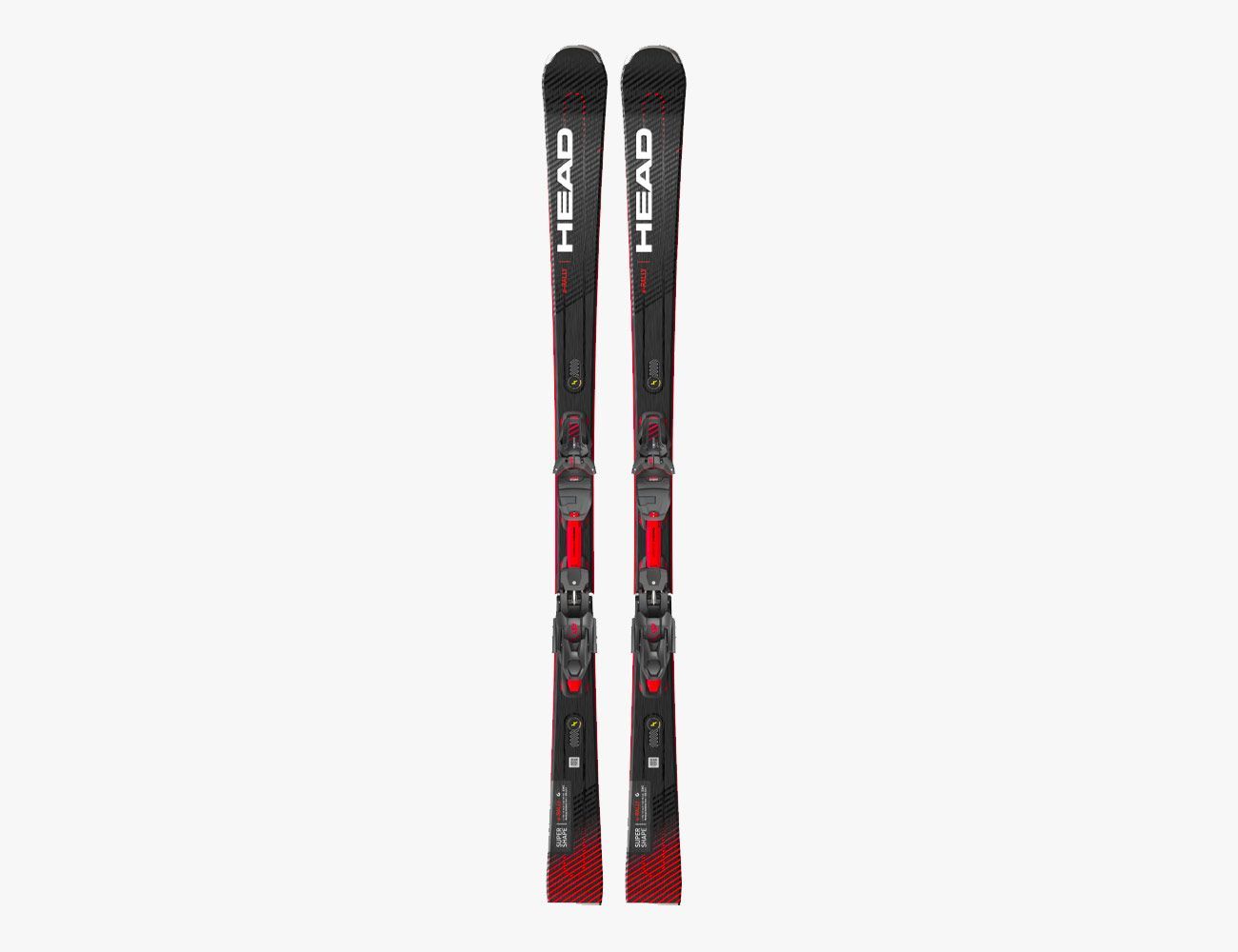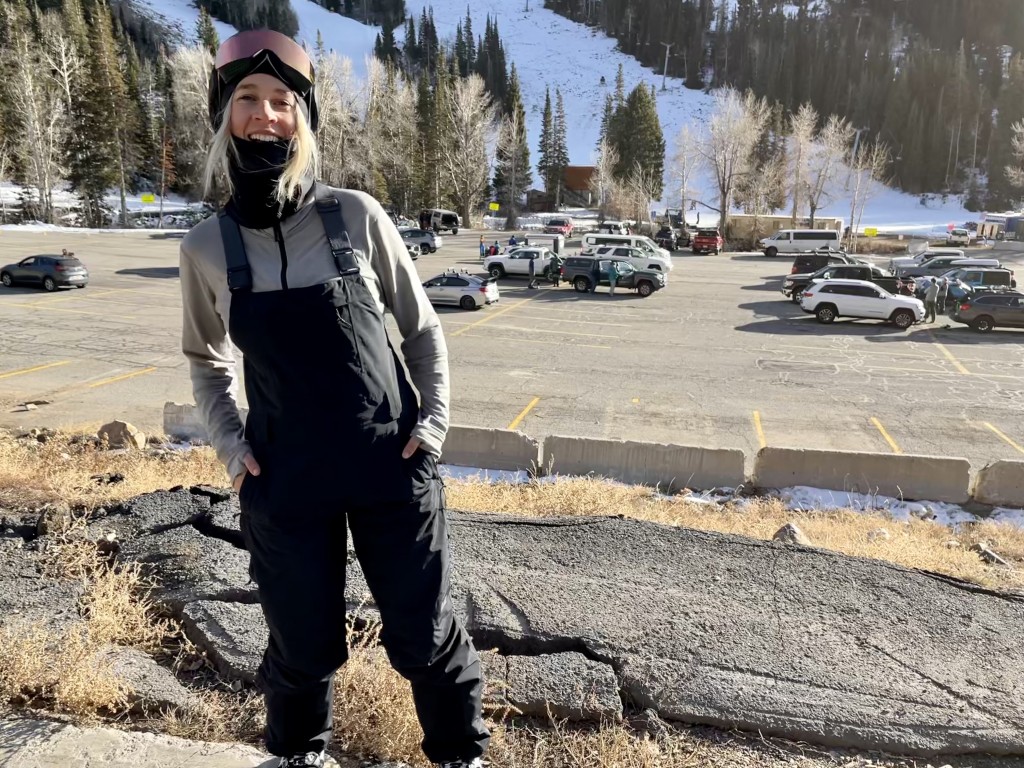
Alpine skiing involves sliding down snowy hills using skis with fixed-heel-bindings. It is a popular winter sport and is practiced worldwide, particularly where there is sufficient tourist infrastructure to support ski lifts and other services.
Speed skiing
In alpine skiing, skiers are coached to ski down a snow-covered mountain slope as quickly as possible. The sport is a time trial, and it is one the main events of the Winter Olympics.
The Olympics will feature five alpine skiing disciplines, including downhill, super-G, giant slalom and combined. Each discipline is made up of different events. The winners of each event receive medals.
Downhill
This is the most basic and most popular of the alpine skiing disciplines, and is a race where competitors ski down a course as fast as they can. The fastest athletes win.

Slalom
Slalom, the second fastest alpine skiing discipline, is a race in which competitors must pass through "gates", plastic poles placed at specific points on a course. These gates are close together and require quick changes in direction. Slalom competitions have two runs on one course. The times of the second run are used to determine who wins.
Giant slalom
The largest and most technical of the alpine skiing disciplines, Giant slalom involves passing through a series of gates, some of which are closer together than in Slalom. This requires a greater degree of skier control than in Slalom and is usually the most difficult discipline to win.
Super-G
Super-G is the third speed discipline for alpine skiing. Competitors ski down slalom trails while also making precise turns and navigating gates. The skier who does the best time across all three courses is the winner.
Combiniert
The sixth and final of the alpine skiing disciplines, combined is a race where competitors ski down both slalom and giant slalom courses in the same time frame. The gold medal is awarded to the athlete who has the fastest overall time.
Grass skiing
A grass skier uses bindings on the heels of his boots to do cross-country or Nordic skiing. It may be performed on groomed trails or in undeveloped backcountry areas.

Telemark
Developed in Norway, telemark is a form of ski turning that differs from Nordic skiing and cross-country skiing. It requires greater control and reflexes to perform than Nordic or cross-country ski.
It is a FIS-sanctioned competition and named after Sondre Norheim, the Norwegian skier who invented it in 1850. He invented new curved and heel-banded skis that make it easier to take sharp turns downhill.
Alpine skiing is a popular winter sport and has been in the Olympics since many years. The first men's and women's races took place at the 1936 Garmisch-Partenkirchen Games, with a combined downhill and slalom event. The first giant slalom and super-G races were added in 1952 and 1988, respectively. The Olympic Games' newest addition is the mixed-team parallel slalom.
FAQ
Which countries produce the best food?
Each country has its own cuisine. So it's hard to say which countries have the best food.
We can however tell you which countries offer the best food!
The top three countries, according to TripAdvisor users, are:
-
Italy - Italy has been voted the number 1 destination by TripAdvisor users thanks to its fantastic food.
-
France – France was ranked second for its rich culture.
-
Spain – Spain came third due to its wonderful weather and beautiful beaches.
Which documents should I bring with me on vacation?
You can always access important documents while you are on the road by keeping copies at home. Keep a backup of your passport and driver's licence, as well as any credit card information, if you intend to use an ATM.
It's always a good idea for you to have a photocopy with you of your passport in case you need it.
Include copies of your reservation and itinerary. These will help with your planning and remembering where you are.
You should also keep a copy your hotel reservation and flight ticket details. You will be able to reach someone back home if there is any trouble.
You should never leave valuables behind. You can keep your valuables safe by keeping them in your wallet or inside your bag.
Avoid losing valuable items by making sure your luggage is checked before you depart.
Remember: It's always safer to keep things simple than to try to over-plan everything.
Enjoy the ride and just relax.
Do you ever worry about forgetting something when you travel?
Yes, I often forget stuff. This is more common when I go on a short trip. Luckily, I always have everything I need with me so I never run out.
For example, I always have my passport with me. And I always check whether I have enough money when I buy tickets.
Also, I always take my phone charger. For other items, I carry a small bag.
You should not forget these things when you travel.
When you travel, you'll find yourself in situations with little time to make decisions. You should be ready to improvise.
You could be stuck there for hours, days and even weeks. If you plan ahead you can have food and water, shelter, and a place for sleep. But if you haven't, you may have to improvise.
These cases will likely require you to rely on the things you are most skilled at. That means making quick decisions based on instinct and experience.
But there are times when you can't choose. There are many situations where you might be left without cell or gas service, or even robbed. These situations will require you to quickly adapt to the situation.
The key is to keep calm, stay focused and act decisively. Don't panic. Instead, be calm and focus on what you can do.
You can choose which direction you want to go if you're lost among the woods. For those who are hungry, berries and mushrooms can be eaten. You can also drink rainwater and melt snow if you feel thirsty.
If you're tired, rest. You can layer up if you are cold. If you get wet, you can put on clothes. You'll feel happier if you remain positive, no matter what your decision.
Statistics
- They're also likely to offer babysitting services, in case you'd like to have dinner one night after 7 p.m. (travelandleisure.com)
- According to Maori legends, this park holds 14 fjords that were all carved by a giant stonemason with an adze. (busytourist.com)
- Alcoholic beverages with more than 24% but not more than 70% alcohol are limited in checked bags to 5 liters (1.3 gallons) per passenger and must be in unopened retail packaging. (tsa.gov)
- Between the ages of 11 and 13, kids, or tweens, will likely want some autonomy but also need boundaries. (travelandleisure.com)
- That's an 18% jump from 2019, the previous record year. (travelandleisure.com)
External Links
How To
How to plan for your next vacation
Planning a trip can involve many things including booking flights, hotel reservations, car rentals, and activities. It also includes important considerations such as budget, schedule, destination, weather forecast, etc.
You should always remember these points while planning your next vacation.
We have prepared a step-by, step guide to help with your next vacation planning. Based on customer feedback and our own experience, this guide was created. We hope that you will find the following guide useful in planning your next vacation.
Steps:
-
Plan your Budget - This is the most important step to take when planning for a trip. Before you can begin to plan where you want to go and what you'd like to do, you should know how much. If you don’t have sufficient money, you may have to cancel your travel plans.
-
Book Your Tickets - Once you've decided on your budget and set your priorities, booking your flight tickets is the first thing that you should do. Book the best available flight deal at the lowest possible price. You should also check to see if any airlines offer special deals during specific seasons. These deals can save you lots of money.
-
Choose Your Destination - Once you've booked your ticket, the next thing you'll need to decide is where you'd like to travel. Numerous factors go into choosing your destination.
-
Find Accommodations. After selecting your destination, the next step is to search for accommodations. There are many options for accommodation, from budget hostels to luxurious suites. It all depends on what you want and how much space you have. If you are looking for somewhere close to the center of the city, a hotel might not be the best option. A homestay might be a better option if you are looking for quieter places far from the crowds.
-
Select Activities & Attractions - After selecting your accommodation, now is the time to select the activities and attractions you wish to include in your itinerary. You have the option to choose a handful of activities or add more depending on the length and duration of your stay.
-
You can now determine your schedule. It is important to stick to a schedule in order for maximum enjoyment of your trip. If you have the freedom to roam as you please, your trip will be even more enjoyable.
-
You can create an itinerary by creating itineraries. Write down all details about your trip, including flights, accommodation, activities, and restaurants.
-
Research online - Make sure you do your research before you leave for your trip. Read reviews and testimonials to find out what other travelers think about different destinations. This will help you plan.
-
Don't Overpack - This is one of the most common mistakes people make when packing. Don't bring five clothes. Bring three. Wear clothing that is appropriate for the climate you are visiting.
-
Be prepared. Make sure you have everything prepared before you go. You don't want your trip to be ruined by searching for vital documents while you're in transit.